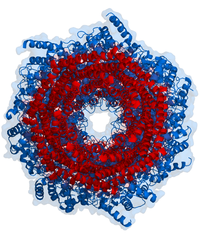
Photo from wikipedia
Enhanced inflammation has been associated with Alzheimer's disease (AD) and diseases with Lewy body (LB) pathology, such as Parkinson's disease (PD) and dementia with Lewy bodies (DLB). One issue is… Click to show full abstract
Enhanced inflammation has been associated with Alzheimer's disease (AD) and diseases with Lewy body (LB) pathology, such as Parkinson's disease (PD) and dementia with Lewy bodies (DLB). One issue is whether amyloid and tangle pathology, features of AD, or α-synuclein LB pathology have similar or different effects on brain inflammation. An aim of this study was to examine if certain features of inflammation changed in brains with increasing LB pathology. To assess this, we measured levels of the anti-inflammatory protein CD200 and the pro-inflammatory protein intercellular adhesion molecule-1 (ICAM-1) in cingulate and temporal cortex from a total of 143 cases classified according to the Unified Staging System for LB disorders. Changes in CD200 and ICAM-1 levels did not correlate with LB pathology, but with AD pathology. CD200 negatively correlated with density of neurofibrillary tangles, phosphorylated tau, and amyloid plaque density. ICAM-1 positively correlated with these AD pathology measures. Double immunohistochemistry for phosphorylated α-synuclein and markers for microglia showed limited association of microglia with LB pathology, but microglia strongly associated with amyloid plaques or phosphorylated tau. These results suggest that there are different features of inflammatory pathology in diseases associated with abnormal α-synuclein compared with AD.
Journal Title: Neurobiology of Aging
Year Published: 2017
Link to full text (if available)
Share on Social Media: Sign Up to like & get
recommendations!